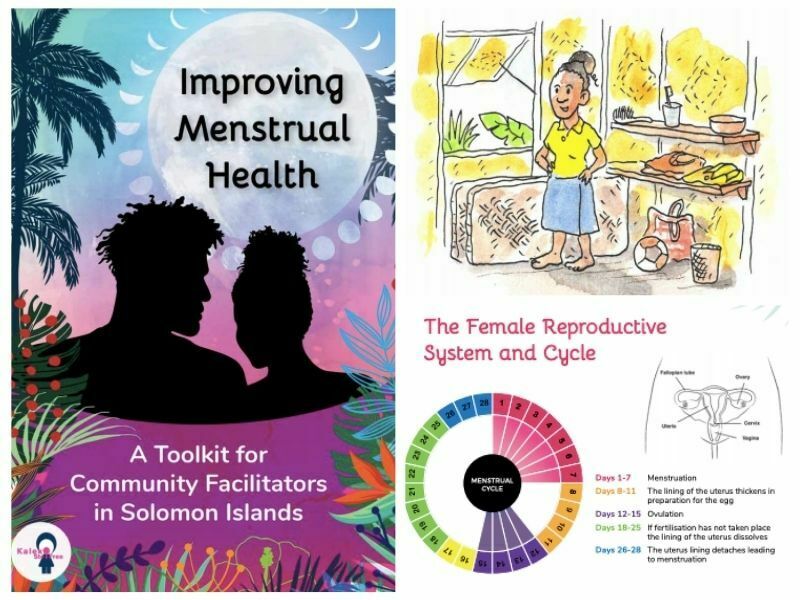Menstrual health and hygiene affects many areas of the lives of women and girls. Menstruation is a healthy and normal occurrence in the female body, and a core function of a woman’s reproductive system. However, it can – and often does – become a challenge when individuals lack access to the resources, infrastructure and social support they need to appropriately manage it.
This facilitation guide has been developed for use in the Solomon Islands by women and men, and girls and boys, in communities and schools. The activities in the facilitation guide can be used to strengthen already existing knowledge on menstruation practices, as well as introduce new information and cultivate awareness about the fundamentals of good menstrual health.
In schools, the activities should be used in conjunction with any formal, government- approved curriculum on menstrual health. With support from their schools, families and communities can use the guide to enable women and girls to reach their full potential.
This document was produced through the New Times, New Targets Project, which aims to improve sustainable and inclusive access to water, sanitation and hygiene (WASH) services and facilities with schools, clinics and communities in rural Solomon Islands. The project is an Australian aid initiative implemented by Plan International Australia in partnership with Live & Learn Environmental Education on behalf of the Australian Government.
To accompany this guide are stickers and posters for the Solomon Islands and Papua New Guinea. As well as the Ladder of Menstrual Confidence; An activity which helps community facilitators develop a better understanding of the level of knowledge and confidence of participants. By conducting the activity at the start of any training, as well as at the end, it also allows measurement of changes in confidence as a result of attending the facilitation sessions.

Available Resources:
Resource Types: Manuals
Locations: Papua New Guinea, Solomon Islands
